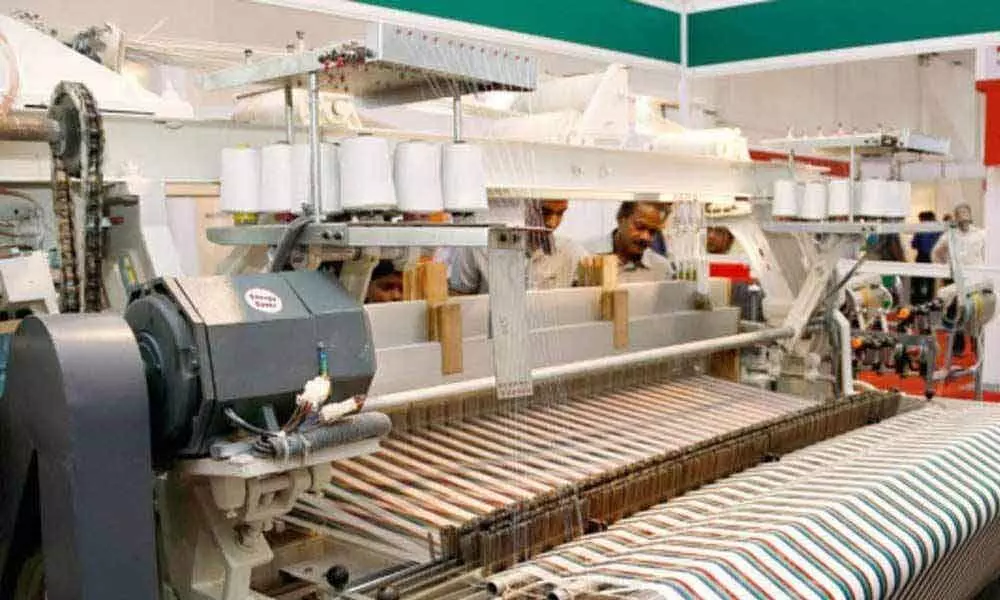GST hike on textiles a major setback for industry & lower middle class
From Jan 1, 2022, readymade garments of sale value not exceeding Rs1,000 per piece will also attract 12% GST; earlier GST on such item was 5%
image for illustrative purpose

Last week government took a big decision to repeal the farmers' law and it seems that the government corrected itself by taking this step. But last week notification of another important decision also issues and it was related to the country's textile and apparel industry. With this decision, from upcoming New year (Jan 1, 2022) clothing is going to cost more to every Indian as now GST on all kinds of garments will be 12 per cent while earlier GST on garment sales value not exceeding Rs1,000 per piece, was just 5 per cent. So, if a common man buys any piece of garment, like simple underwear costing around Rs 100, he or she will be paying Rs 12 to the government. At the business level, it is going to affect around 2.5 million apparel manufacturers, traders and retailers across India.
This decision doesn't seem to have any logic. See from a layman point of view- If a person from lower-middle-class buy a simple T-shirt or any low-cost product from a roadside small shop and a high networth Individual buys a branded high coat worth Rs50,000 or even more, both will be paying the same GST.
Have our policymakers or government's think tank forgotten that Roti, Kapda aur Makaan (Food, Clothes and Shelter) are the basic necessities and poor people are already facing pinch of high inflation? Not only the common man, even a major portion of the industry will also face the heat of this decision as the majority of the customer in India prefer to buy a piece of cloth below Rs1,000 (only purchasing on festival and marriage seasons is exceptional). As per reports, more than 70 per cent of India's apparel market comprises garments priced below Rs1,000.
Already the market was expected to see at least 15 per cent price increase in garment cost in the coming season even without the GST rate increase. If one compare the new GST rates on various textile items, it is not that these rates are going to cost low-cost garments by 7 per cent, overall costing of garments will be more as synthetic as well as cotton fabric will also have now 12 per cent GST. The new rates for job work (outsourcing) dyeing and printing of textile products is also increased (from existing 5 per cent, it will be the same 12 per cent). Thousands of small garment manufacturing factories depend further on small or unorganised job workers for many processes like dyeing, printing etc. Increased GST will also force all these stakeholders to arrange more working capital. And in case if a job worker is not registered under GST, then 18 per cent tax will be applicable.
It is like the government is following the carrot and stick approach. On one side, it is coming with various promotional schemes like PLI, MITRA. Ministry of Textiles is on toes to support the industry and at the top level, Commerce and Industry Minister Piyush Goyal is also Textile minister which eases the overall working at the top level, increase the decision-making process, increase coordination between two important and interconnected ministers. On the other side, there is a decision like 12 per cent GST on all kinds of fabrics and garments. The sad part of this entire development is that this hike is despite the strong efforts of various trade bodies against this. Just a few months back, a delegation of industry stalwarts met Piyush Goyal and conveyed that how difficult it is going to be with this decision. More than 12 associations in Kolkata raised their disappointment strongly and jointly.
In the last 5 years, the industry is anyhow just surviving as it has faced unprecedented challenges like demonetization, GST, Covid, the highest ever yarn price and now this GST hike. Still, one expects this highest job-creating industry after agriculture will grow. After GST, the compliance burden has grown multi-folds in the unorganised segment. There will be no surprise if we see the garment manufacturers, traders on roads demonstrating against this hike.
And if industry insiders believe, this hike can force an industry segment to unethical practices also as they are not in the position to increase the price or reduce their margin. One more thing is here worth observing that in media it is being presented by the government that the removal of inverted tax structure on MMF textiles value chain and uniformity of rates brings relief to the textiles sector. The uniform rate of 12 per cent for the entire value chain of MMF textiles sector will reduce the compliance burden of the industry players. But what about increased price, what about the challenges for SME's sector?
GST system is going to complete five years in India by July next year and so far in five years, the textile and garment industry has seen many complications in GST be it inverted tax structure, unfair rates etc. Now like farmers, do 2.5 million apparel businessmen should go for agitation and force government to take this decision back. Is there any other way for these people to survive?
(The author owns a garment manufacturing setup in a rural area, which employs mostly women workers)

